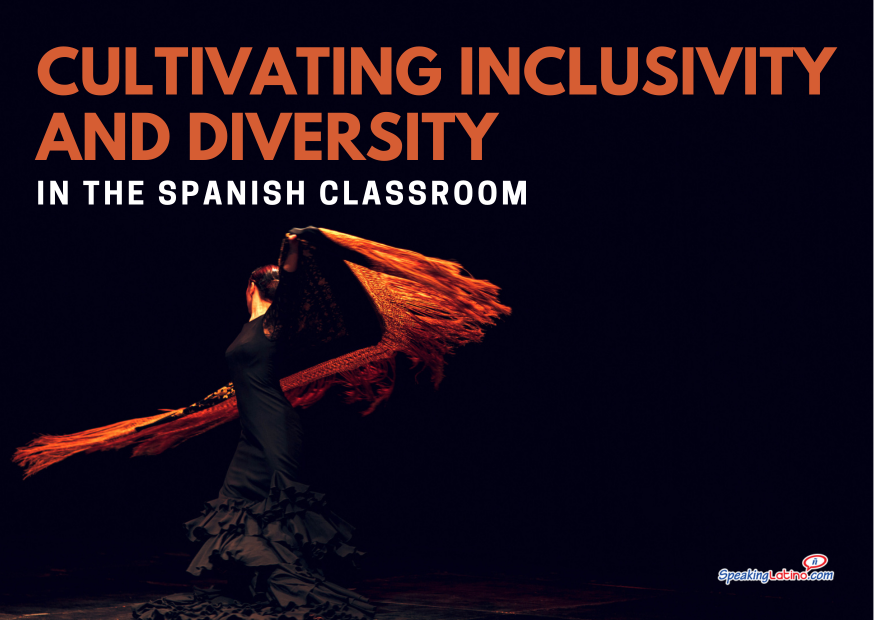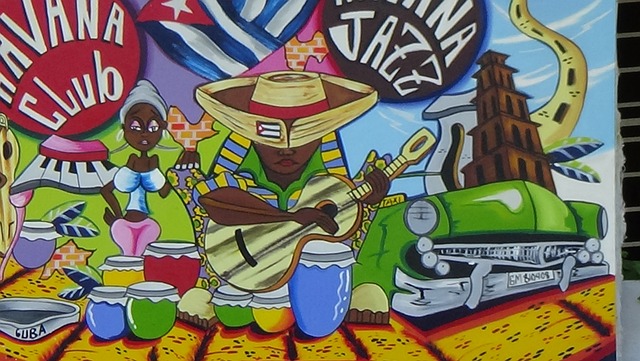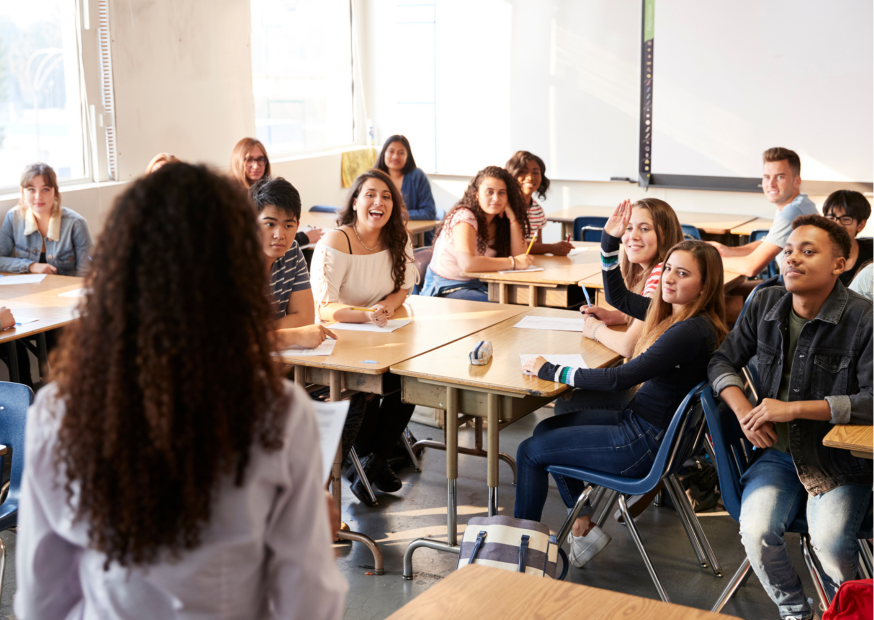
The content of this article is based on the presentation, Transforming Perspectives: Cultivating Culture in Your Curriculum by Allison Perryman, which was part of the World Language Teacher Summit.
The Imperative for Cultural Sensitivity in Education
The face of education is changing; it mirrors the vibrant and diverse composition of the world outside the classroom. As enrollment becomes increasingly diverse, particularly in language classrooms, educators are called upon to interrogate their biases and create fertile ground for thoughtful cross-cultural engagement. Explore the transformative practices that are essential for promoting a more inclusive, accurate, and engaging Spanish classroom.
Confronting and Dissecting Biases: A Path to Enlightenment
Educators are the navigators of classroom culture; thus, they carry the mantle of confronting personal biases that may unwittingly shape their teaching practices. To initiate transformation, it is vital for teachers to recognize and understand the origins and implications of their preconceived notions. By addressing these biases head-on, they can start actualizing classrooms that are equitable and celebratory of student diversity.
Reimagining the Classroom Environment: A Tapestry of Cultures
When the walls of a Spanish classroom echo the true vibrancy of the students' heritages, learners are more likely to engage and succeed. Moving away from clichéd or inaccurate cultural symbols to those that authentically reflect the students' lived experiences dignifies their identities. Consulting with students to decorate the classroom not only honors their culture but also empowers them in their learning environment.
Curriculum with a Panoramic Cultural Lens
In embracing diversity, curriculum design must shift from a mono-cultural perspective to a panoramic cultural lens that recognizes and incorporates various Hispanic and Latino experiences. By transcending textbook content, and integrating stories, traditions, and the lived realities of local and global communities, learning experiences become more meaningful and relevant for students from all backgrounds.
Delving Deep into the Cultural Iceberg
Beyond the visible facets of culture, like language and festivals, lies the more profound cultural iceberg - the unseen depths that shape beliefs and behaviors. It is critical for language educators to navigate with students through the depths of humor, customs, attitudes, and dialects. This comprehensive approach enriches the studying experience and broadens learners' cultural insight.
Respecting Linguistic Diversity: The Melting Pot of Spanish Dialects
Spanish is a language enriched by its association with a multitude of dialects, languages, and cultures. Recognizing this multiplicity within the Spanish classroom emphasizes the dynamic, evolving nature of language and fosters an appreciation for linguistic diversity. It encourages learners to understand language as a living entity that reflects myriad human experiences.
The Anti-bias Teaching Paradigm
Embarking on anti-bias education requires a commitment to creating a classroom ethos that values and reflects all students' perspectives. This pedagogical framework integrates authentic, real-world issues, encourages critical reflection, and cultivates a classroom that is attuned to the diverse experiences that students bring with them. It is an essential strategy toward achieving comprehensive and democratic education.
The Educator's Journey: Reflective Practice and Bias Mitigation
Educators hold the profound responsibility to interrogate their practices and bias continuously. Through self-reflection, professional development, and seeking constructive feedback from colleagues, teachers can evolve their pedagogical strategies. This personal growth journey is critical for nurturing an environment of inclusivity, respect, and acceptance within the classroom.

Guest speakers, cultural celebrations, community projects, and experiential activities enrich the curriculum and create deeper connections between the learner and the language.
Authenticity in Cultural Exposition
To captivate and maintain student interest in the language, educators should introduce authentic cultural materials, practices, and experiences. Guest speakers, cultural celebrations, community projects, and experiential activities not only enrich the curriculum but also create deeper connections between the learner and the language.
Modern technology offers additional virtual pathways to immerse students in cultures world-wide, further enhancing the authenticity of their learning experience.
Enrichment Through Student Cultural Contributions
The classroom is a microcosm of society and can be most enriching when the diverse cultural backgrounds of students are used as a resource. When learners are invited to introduce their unique cultural perspectives into the curriculum, it creates a reciprocal learning environment. This shared cultural exchange elevates the educational experience, fostering a collective respect for multiculturality.
FAQs About Cultivating Culture in the Spanish Classroom
What are some practical strategies for promoting inclusivity and diversity in my teaching?
Promoting inclusivity and diversity in your teaching is essential for creating a welcoming and supportive learning environment for all students. Here are some practical strategies to help you achieve this:
- Culturally Relevant Curriculum: Develop a curriculum that reflects the diverse backgrounds and experiences of your students. Incorporate materials, examples, and perspectives from various cultures and ethnicities.
- Inclusive Language: Use inclusive language that respects and acknowledges the diversity of your students. Avoid stereotypes and assumptions based on race, gender, or other identities.
- Representation: Ensure that your teaching materials, resources, and classroom decor represent a variety of cultures, ethnicities, and backgrounds. Include diverse role models and historical figures in your lessons.
- Create Safe Spaces: Establish a classroom environment where all students feel safe, respected, and valued. Encourage open dialogue and mutual respect among students.
- Celebrate Diversity: Acknowledge and celebrate the diversity within your classroom through cultural celebrations, heritage months, or special events that highlight different cultures and traditions.
- Address Bias and Stereotypes: Be proactive in addressing bias and stereotypes that may arise in the classroom. Encourage critical thinking and discussions about social issues related to diversity and inclusion.
- Professional Development: Attend workshops, training sessions, and conferences focused on diversity, equity, and inclusion in education. Continuously educate yourself on best practices for promoting inclusivity in your teaching.
By implementing these practical strategies, you can create a more inclusive and diverse learning environment that supports the success and well-being of all students in your classroom.
How can I effectively engage students of diverse backgrounds in cultural learning experiences?
Effectively engaging students of diverse backgrounds in cultural learning experiences requires a thoughtful and inclusive approach. Here are some strategies to help you engage all students in exploring and appreciating different cultures:
- Acknowledge and Value Diversity: Start by acknowledging and valuing the diverse backgrounds and experiences of your students. Create a classroom environment where all cultures are respected and celebrated.
- Personal Connections: Encourage students to share their own cultural backgrounds, traditions, and experiences with the class. Provide opportunities for students to connect their personal identities to the cultural content being studied.
- Multimodal Learning: Incorporate a variety of learning modalities, such as visual, auditory, kinesthetic, and experiential activities, to cater to different learning styles and preferences among students.
- Hands-On Activities: Engage students in hands-on activities that allow them to experience different cultural practices, such as cooking traditional dishes, creating art inspired by a specific culture, or learning traditional dances.
- Collaborative Projects: Assign group projects that require students to work together to research and present on a particular aspect of a culture. Encourage collaboration and peer learning among students from diverse backgrounds.
- Cultural Exchanges: Organize cultural exchange events where students can interact with peers from different cultural backgrounds, share their traditions, and learn from each other's experiences.
- Authentic Resources: Use authentic resources from diverse cultures, such as literature, music, films, and artifacts, to provide students with a genuine and immersive cultural learning experience.
- Reflection and Discussion: Encourage students to reflect on their own cultural biases and assumptions, and engage in open discussions about cultural differences, similarities, and the importance of cultural understanding.
By implementing these strategies, you can create a culturally inclusive and engaging learning environment that promotes cross-cultural understanding and appreciation among students of diverse backgrounds.

The classroom is a microcosm of society and can be most enriching when the diverse cultural backgrounds of students are used as a resource.
What are some creative ways to celebrate cultural celebrations and traditions in the Spanish classroom?
Celebrating cultural celebrations and traditions in the Spanish classroom can be a fun and engaging way to immerse students in the richness of Hispanic culture. Here are some creative ideas to incorporate cultural celebrations and traditions into your Spanish classroom:
- Festive Decorations: Decorate your classroom with traditional decorations related to specific Hispanic celebrations.
- Cultural Food Tastings: Organizing a cultural food tasting event where students can sample traditional Hispanic dishes and learn about their significance is a hands-on way to engage with the culture. Encourage students to research and share the significance of the dishes.
- Music and Dance Performances: Hosting music and dance performances featuring traditional Hispanic music genres allows students to experience the cultural richness through music and movement.
- Art and Craft Projects: Engaging students in art and craft projects inspired by Hispanic culture provides a creative outlet for exploring and expressing cultural traditions.
- Cultural Presentations: Assigning students to research and present on different Hispanic cultural celebrations and traditions encourages in-depth exploration and understanding of the diverse cultural practices. For example: Las Posadas, La Tomatina, or Día de los Reyes. Encourage creativity and interactive presentations.
- Holiday Celebrations: Celebrate major Hispanic holidays with special classroom activities, games, and presentations that highlight the cultural significance of the holidays.
- Virtual Field Trips: Take virtual field trips to explore cultural sites and landmarks in Spanish-speaking countries, such as museums, historical sites, or traditional villages. Use technology to bring cultural experiences into the classroom.
- Guest Speakers: Invite guest speakers from the Hispanic community to share their cultural traditions, stories, and experiences with your students. This provides authentic insights and connections to Hispanic culture.
By incorporating these creative ideas into your Spanish classroom, you can create a vibrant and immersive cultural learning experience that celebrates the diversity and richness of Hispanic traditions and celebrations.
Embracing a Lifelong Intercultural Quest
Transformation in perspective is not a destination, but a dynamic, ongoing journey that requires continuous commitment and adaptability from educators. By persistently seeking out new resources, participating in professional learning networks, and staying abreast of evolving educational practices, teachers can ensure that their Spanish classrooms are sanctuaries of diversity, inclusivity, and intercultural appreciation. This journey is not only about teaching a language; it is about shaping a more compassionate, understanding, and interconnected world.